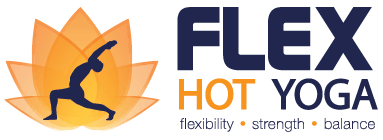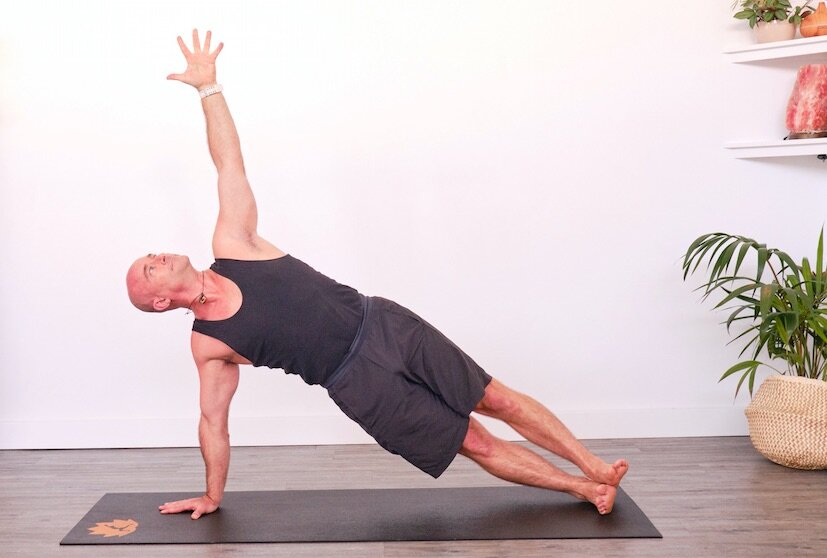Posture of the month: Vasisthasana (Side Plank)
Some postures seem simpler than others and - at first glance - you might be surprised to find something as seemingly simple as the side plank on our POM list. After all these advanced inversions and heavy-duty power postures, now something so much less advanced? Well… you haven’t seen the variations yet…! So get ready to strengthen your core before taking it a step further!
In Sanskrit, Vasisthasana means 'Sage Vasistha’s Posture' (from Vasistha: the name of the sage and asana: posture). So let’s explore both the health benefits and the amazing teachings Lord Vasistha has for us…
Vasistha is one of the seven sons Lord Brahma birthed from his mind. They are also known as the star constellation ‘Pleijades’.
When giving birth to Vasistha, Brahma made sure he was initially unaware of his true, divine nature. Thus, Vasistha experienced the suffering of humankind and - as expected - started to ask questions about how he had become trapped in such a sorrowful and limited physical existence. This gave Brahma the queue he had waited for and he taught him that we are not the body or the mind. We are spirit souls. The soul is not bound and our true nature is limitless.
Does this story remind you of the Buddha? Similarly, he grew up in a palace, but left it to live in the real world. Over time, he came to the same conclusion: Having lived earlier, however, Vasistha is known to be the first student (and later teacher) of what we now call advaita vedanta, or jnana yoga.
Rishi Vasistha with his famous disciple, Lord Rama
One of Vasistha’s most famous students was Lord Rama who you might know from the famous epic, Ramayana.
As a young man, Rama ventured out to explore his father's kingdom. Similarly to the Buddha, he became very depressed when he saw people sick and suffering, so he started questioning the meaning of life. How could he be king if he was unable to improve the lives of his people? As his teacher, Vasistha shared with him truths that are nowadays known as the Yoga Vasistha:
The soul (Self) is real, but the world is false, like a dream.
When we identify with the world's circumstances and feel that it is up to us to change them, we suffer.
In reality, we simply have to wake up to the infinite joy and contentment inherent in each present moment.
Learning to control the mind leads to liberation and to the realisation that we are the Self.
All the pleasures that the world holds are nothing compared with the abiding bliss of Self-realisation.
Such an attitude might seem harsh or unfeeling, like an excuse to give up personal responsibility.
But remember: Indian philosophy works on two levels of reality: the transcendent level and the mundane level that we experience from day to day. Rama realised that - ultimately - he was not in charge. However, as the future king he was very much responsible for his peoples’ welfare and it was his duty (dharma) to alleviate suffering wherever he could. A message similar to that of the Bhagavad Gita, where we learn to do our duty, but then detach emotionally and leave the results to the Divine.
Vasisthasana on a physical level: Balancing your strong side and weaker side
The health benefits you can expect from practicing Vasisthasana are manifold, and mainly affect your back:
It tones the entire upper body and strengthens the back muscles, especially the lumbar area
It stretches and strengthens the shoulder girdle, arms, wrists, legs, belly and abdominal wall
It helps you increase your sense of balance
Please note: If you have serious wrist, elbow, or shoulder injuries, you should avoid this posture.
A relief for scoliosis?
Having a son who was recently diagnosed with scoliosis (a curving of the spine), the following information got me curious: In a 2014 study, Dr. Loren Fishman suggests Vasisthasana might have potential benefits for scoliosis. For just over half a year, Ms Fishman had her study participants practice side planks on their weaker, convex side (the side toward which the spine curved) for an average of 1.5 minutes a day. She found that, within just over 6 months, 19 of the 25 participants experienced marked improvements. With regular practice, their spinal curvature lessened as their muscles grew stronger.
As I have learnt in my research, there are different types of scoliosis, so not all people might see equal benefits. But it is a great additional step we can take to help my little man get better…
It’s been a while since this one - but Mantra enjoys Vasisthasana much as ever…
Fascinating words from an inspirational teacher
The main inspiration for this article was from an article by yoga teacher Zo Newell, PhD. She concludes with the following words:
“Vasistha's teaching encourages us to remember that our true nature is infinite, and that our current situation should be viewed with a grander perspective. At the same time, it is not enough simply to assert “I am infinite” if you are experiencing the duhkha (suffering, unsatisfactoriness) of bondage [in the material world]. As a therapist friend of mine used to say, you can't make an end run around suffering. You need to understand the origin of your suffering before you can transcend or dismantle it. That origin is very often traceable to a desire for life to be something other than it is—for events to have had an outcome different than they had, and for unmet needs to have been met.”
As always, remember to come along to Flex regularly and practice with us! There are over 25 classes/week, and we will practice side planks daily during all of March 2020!






